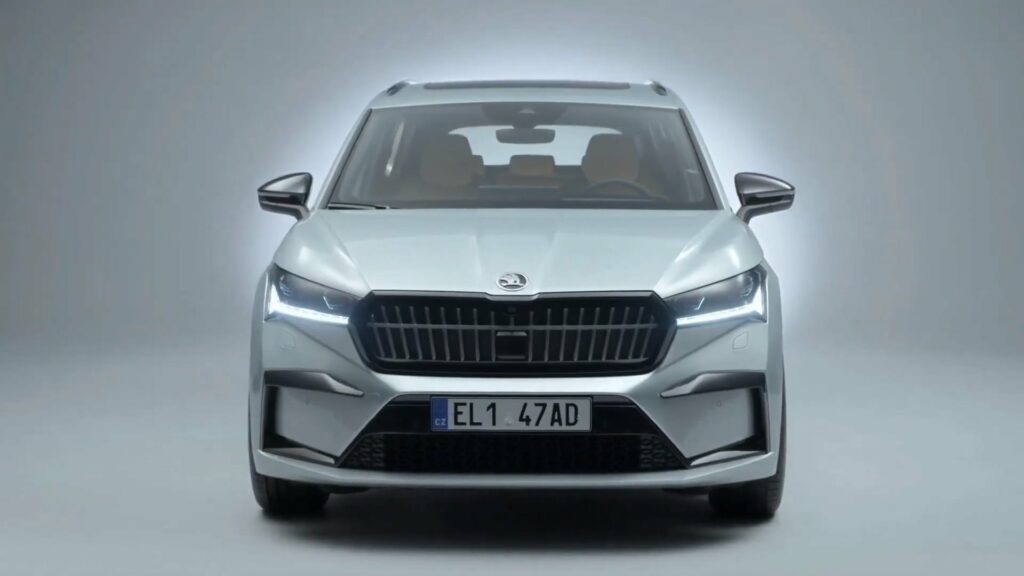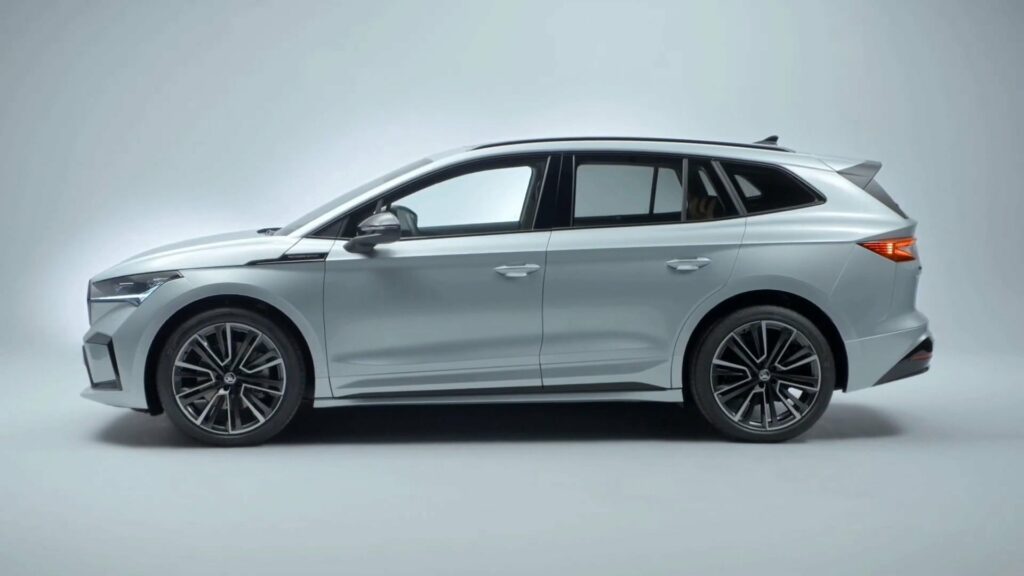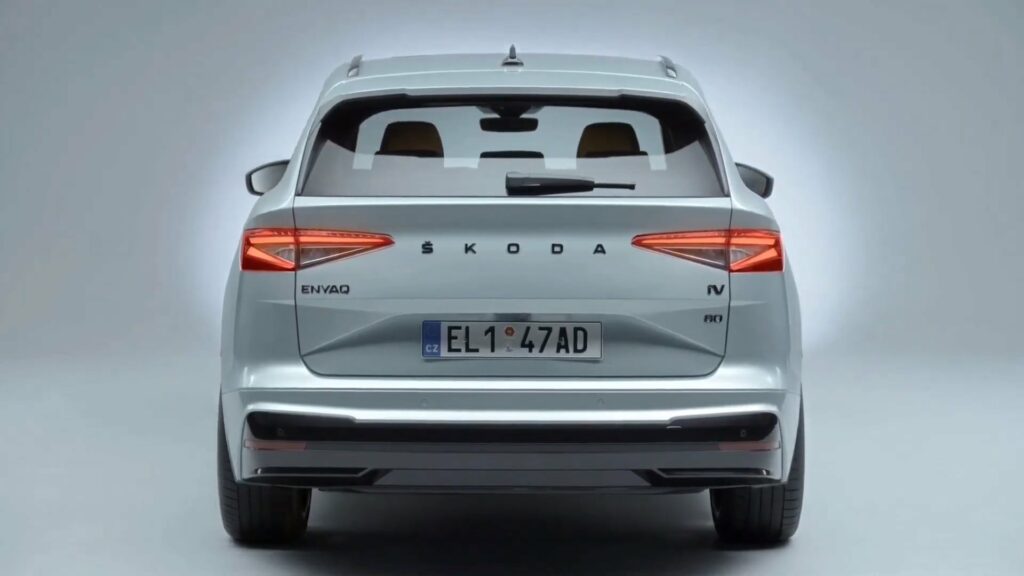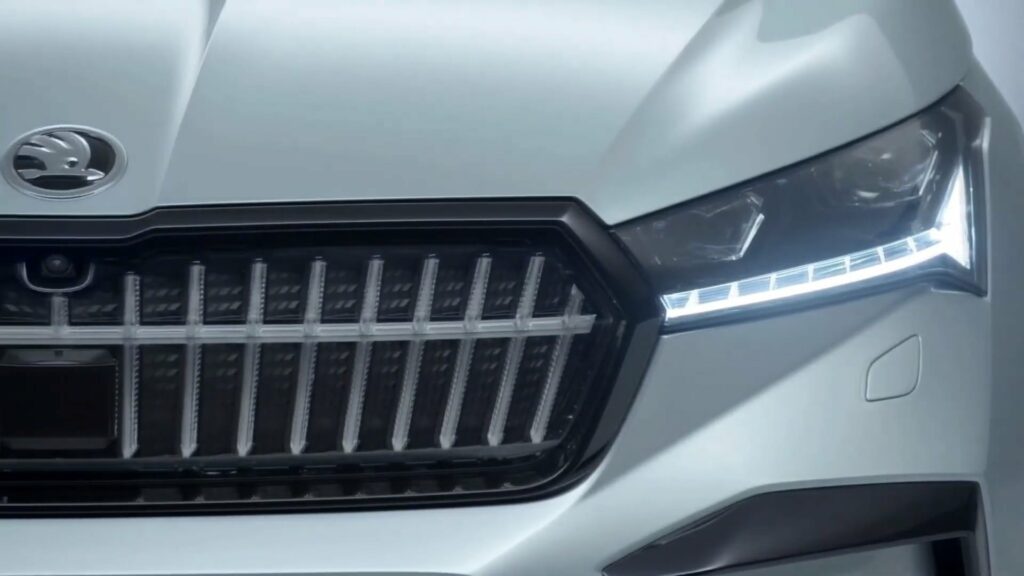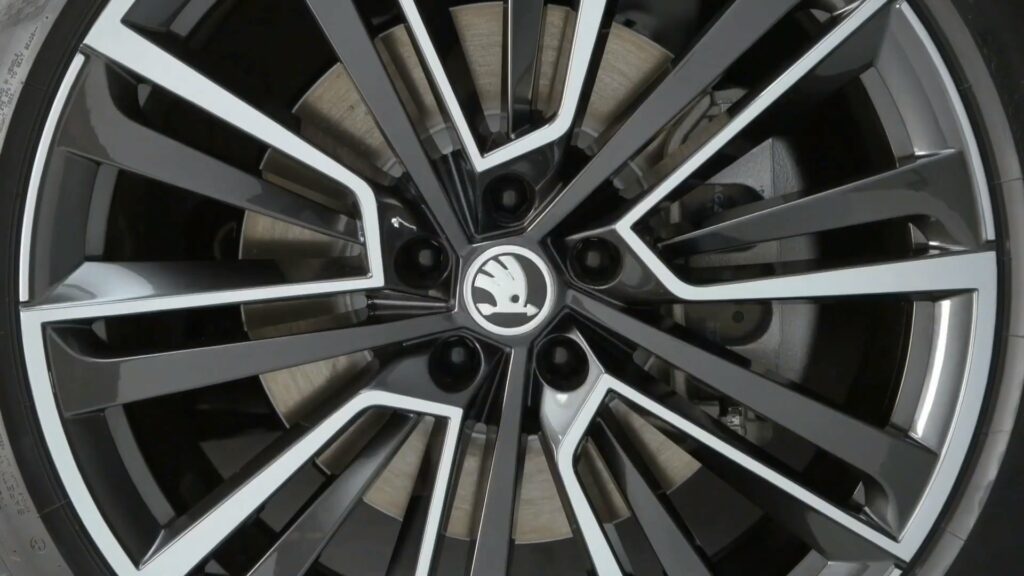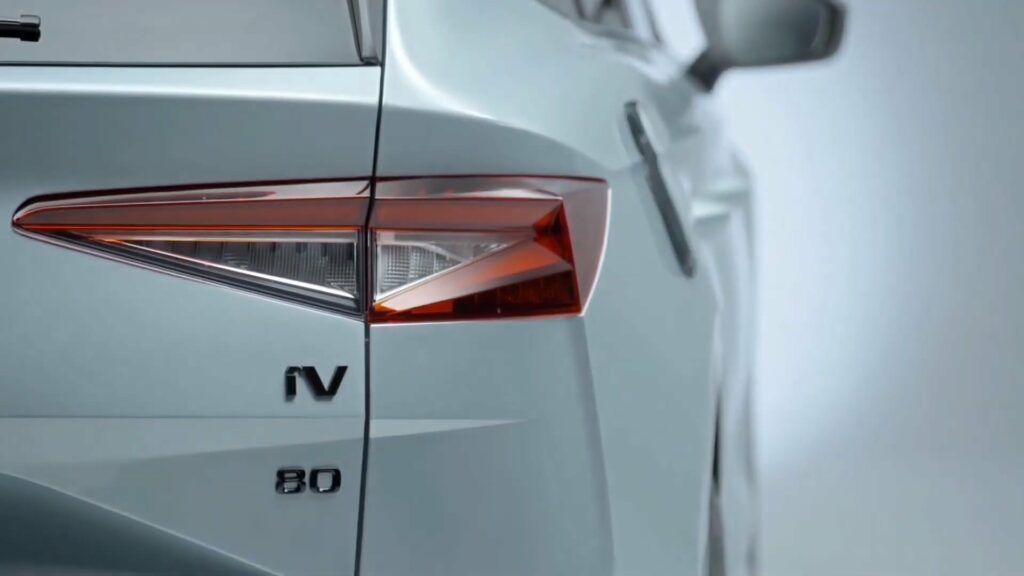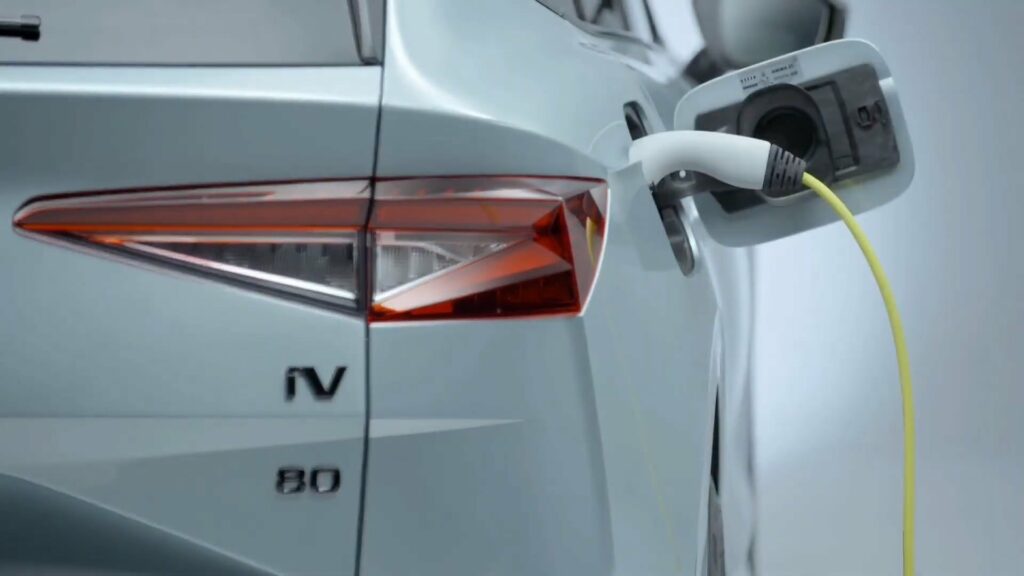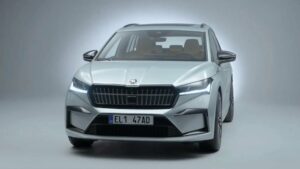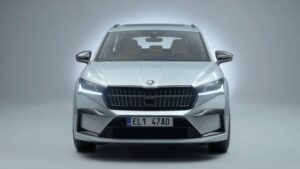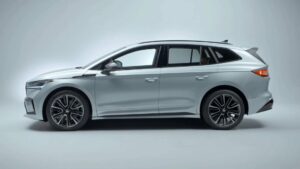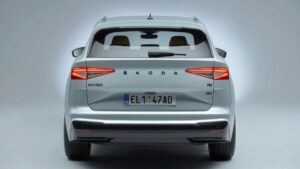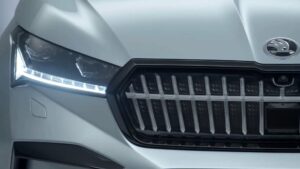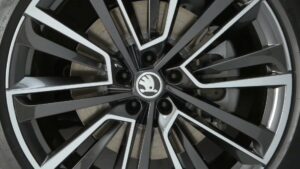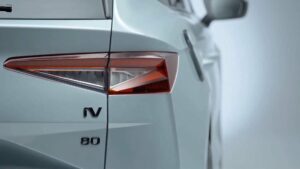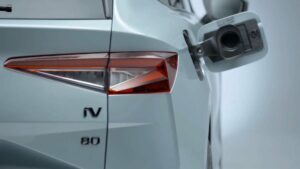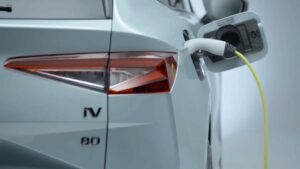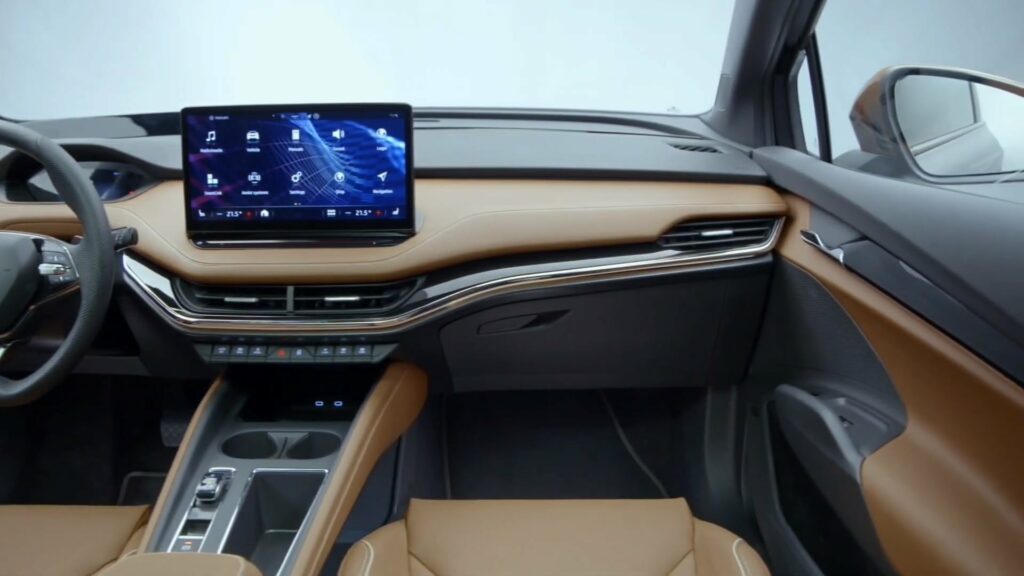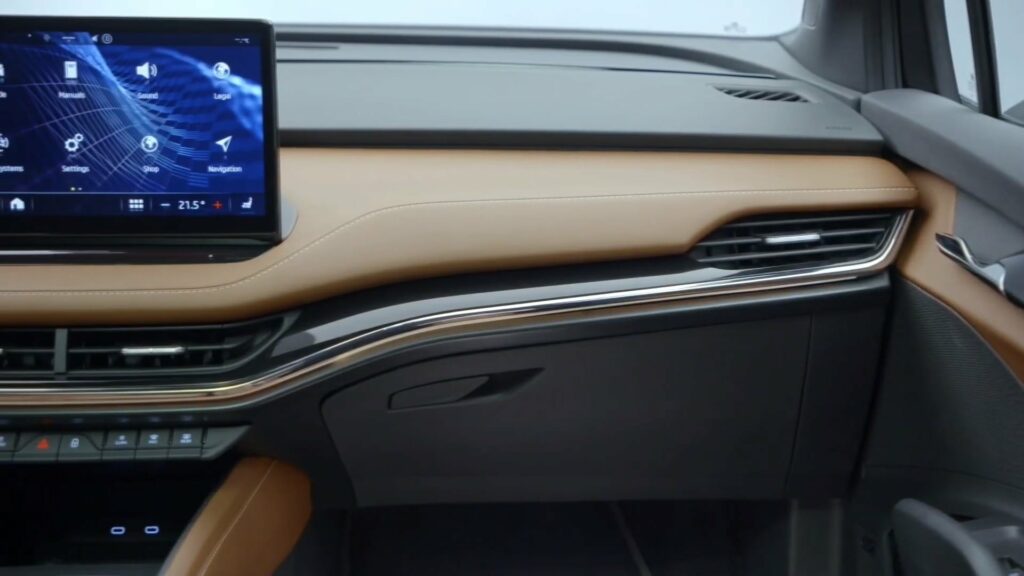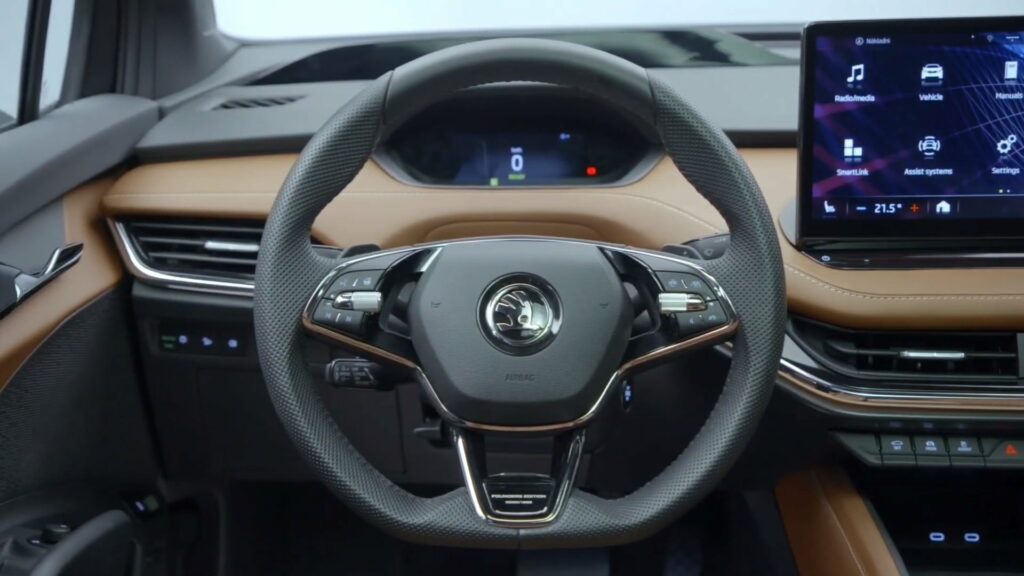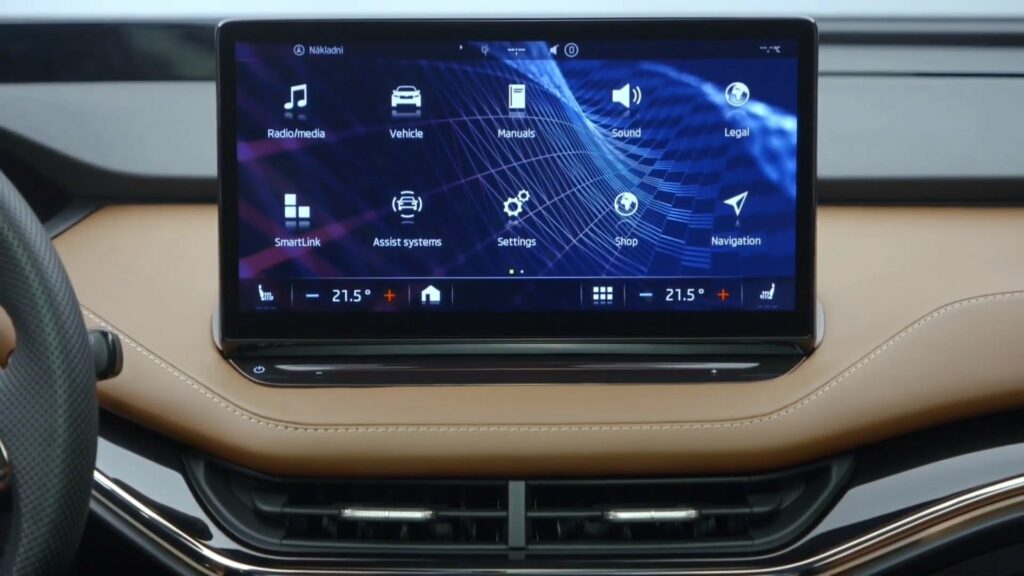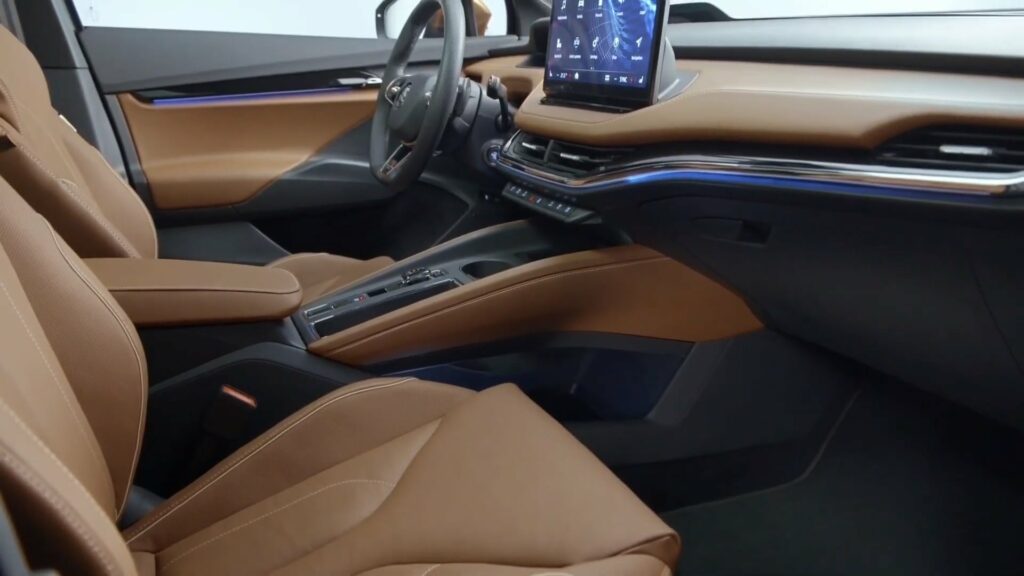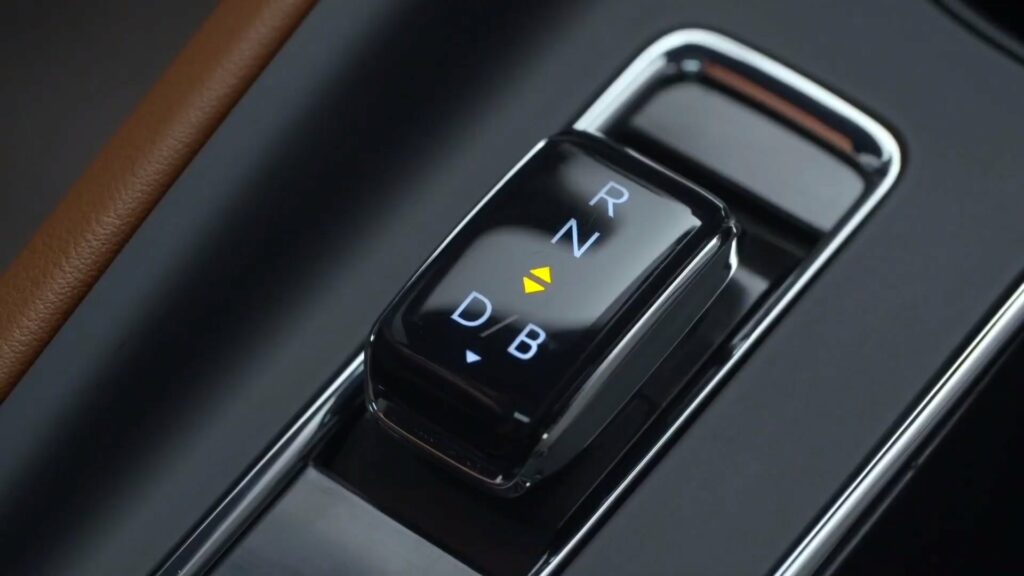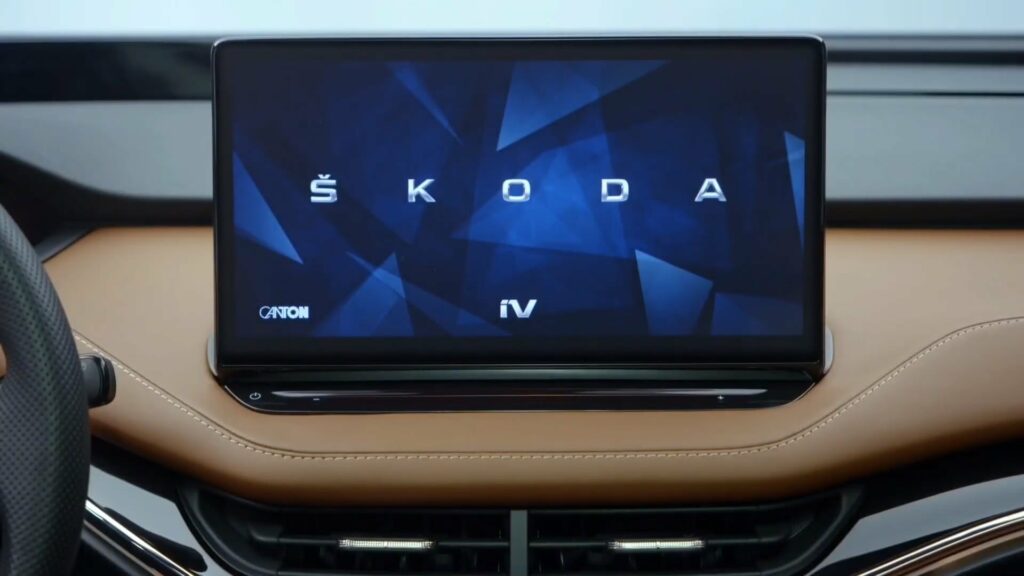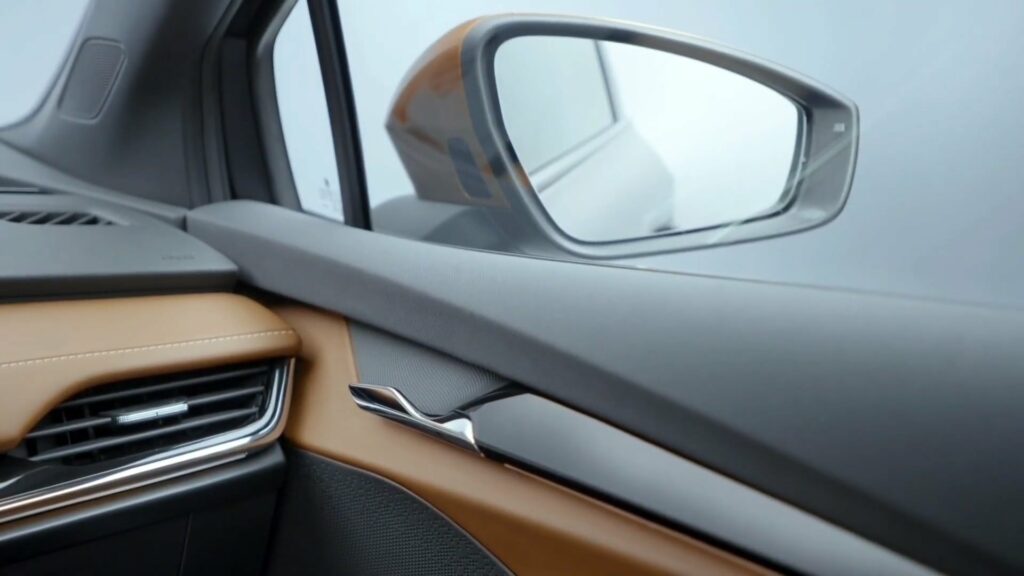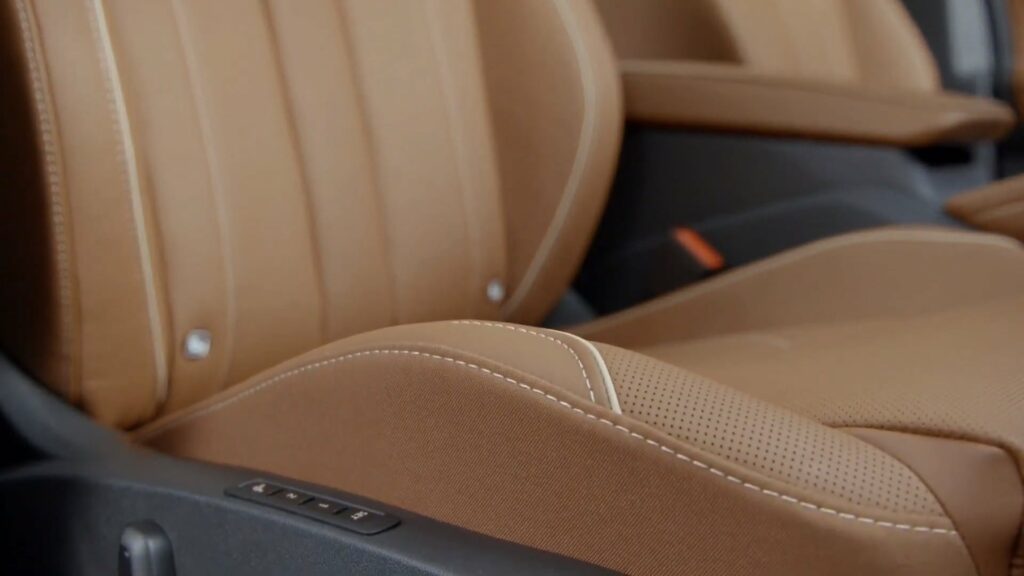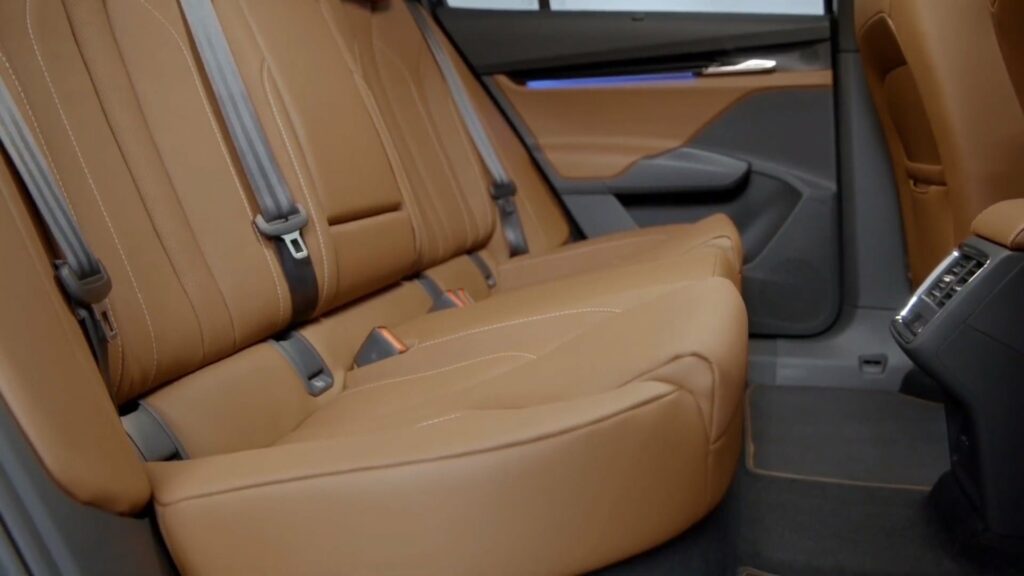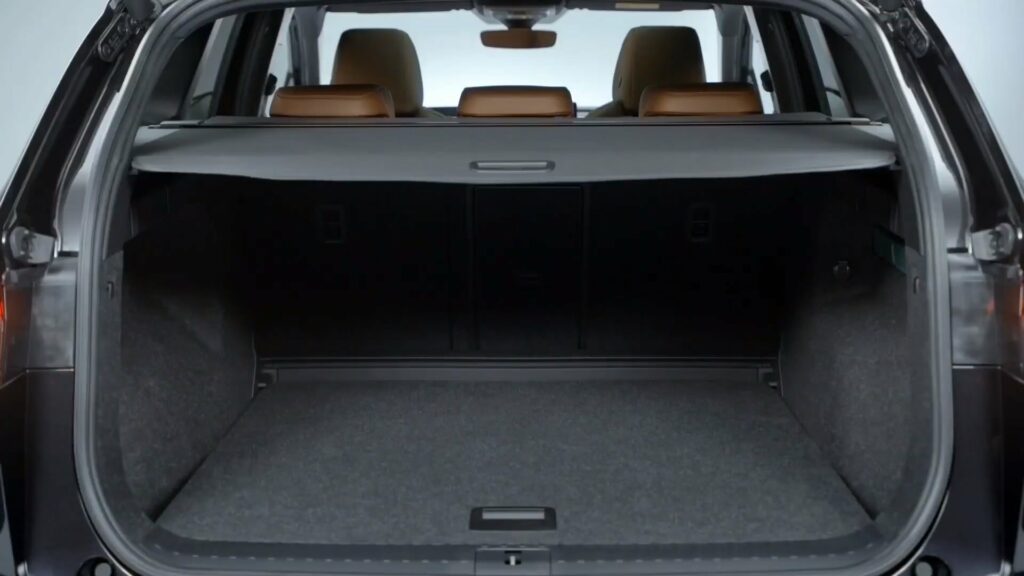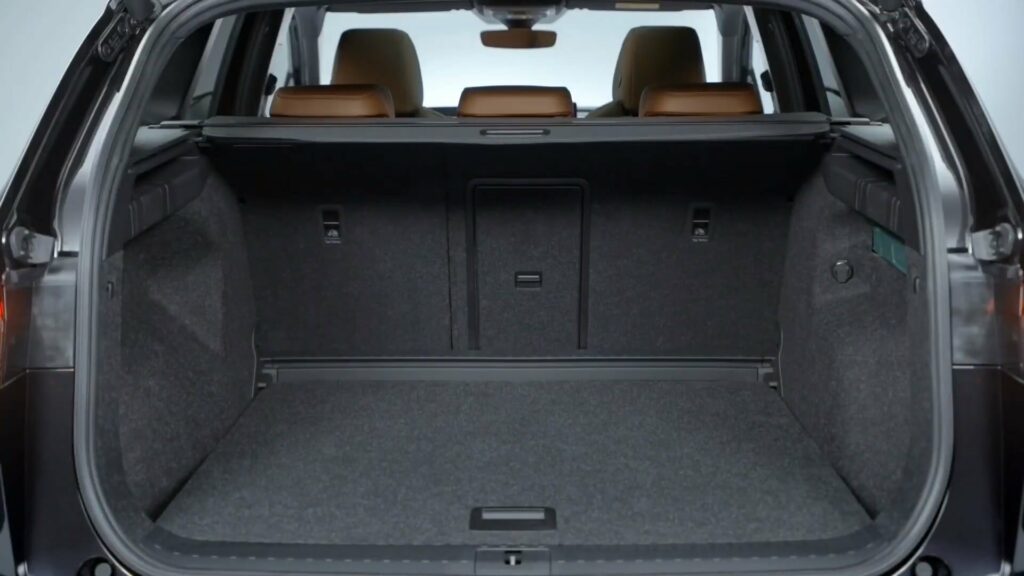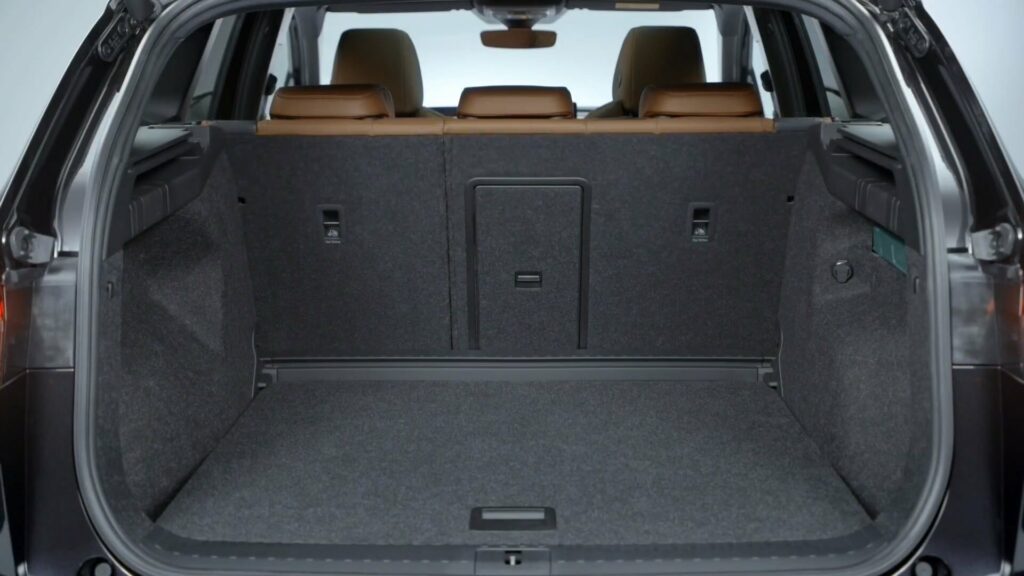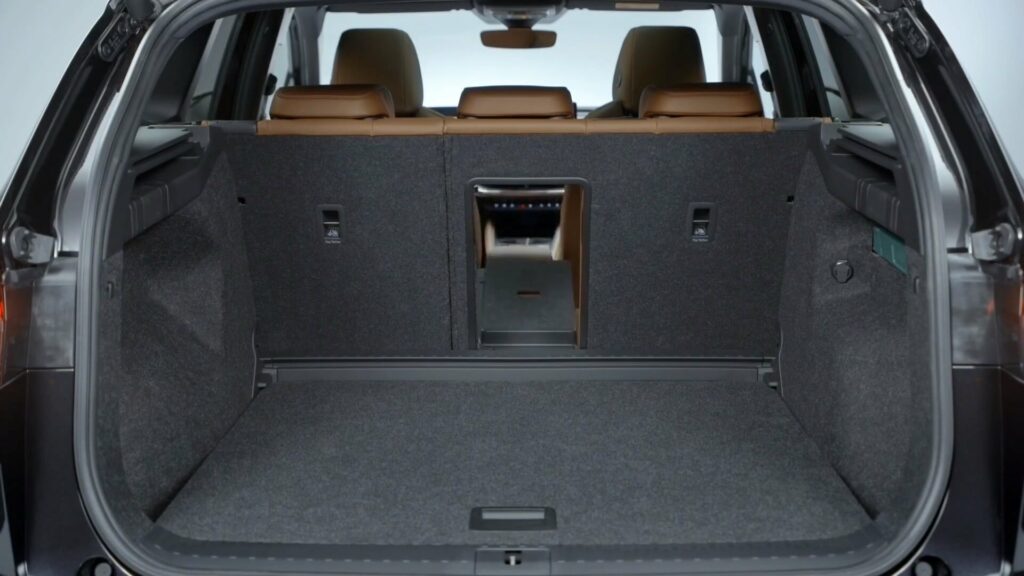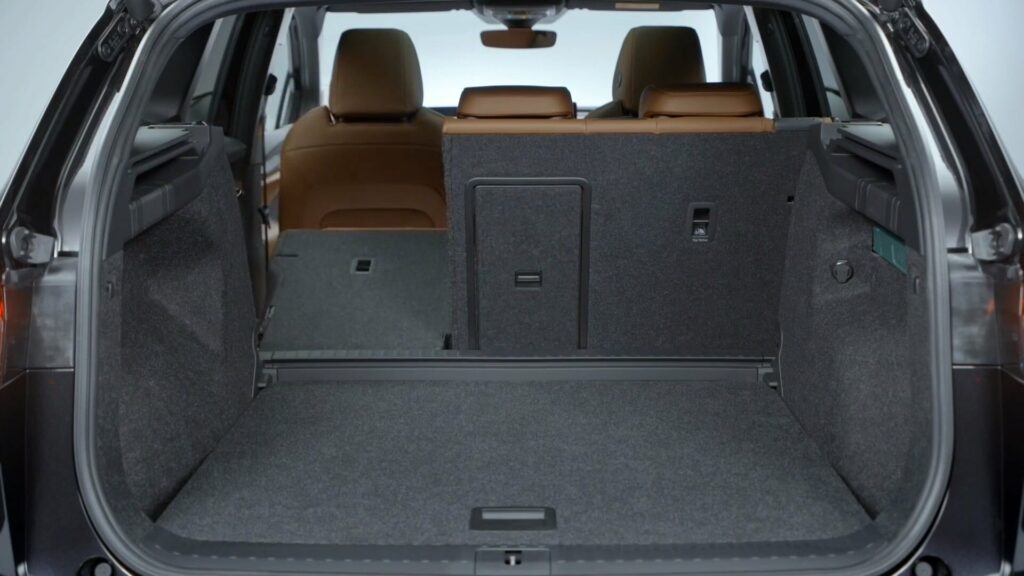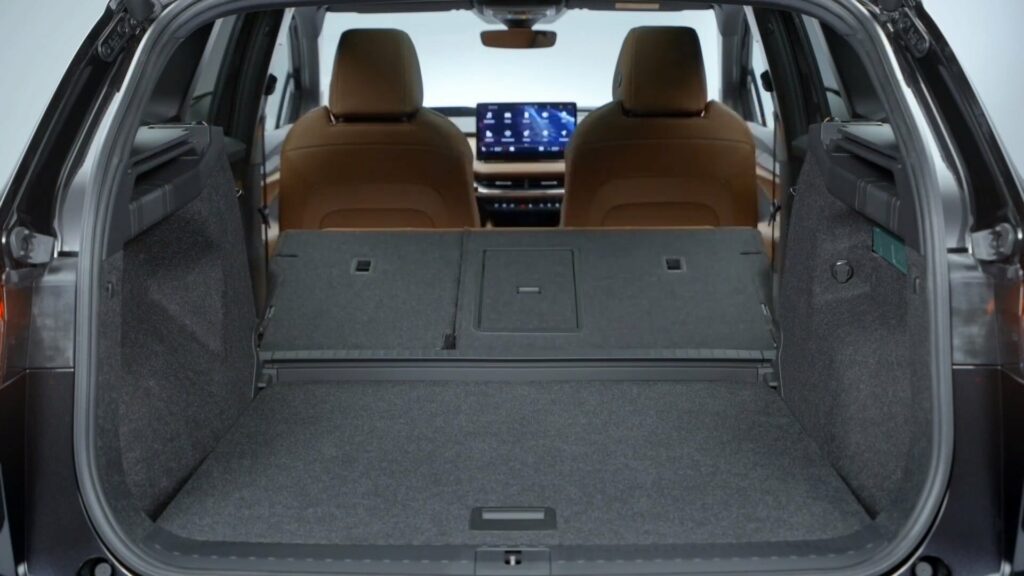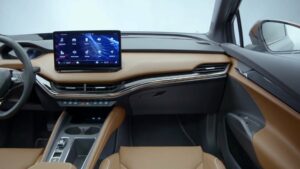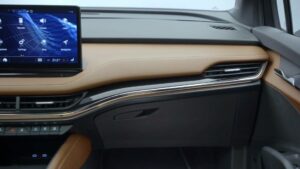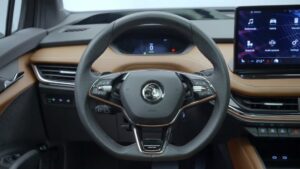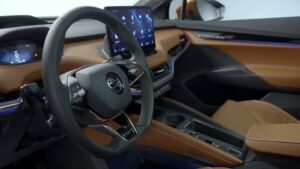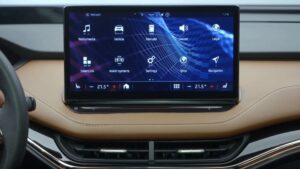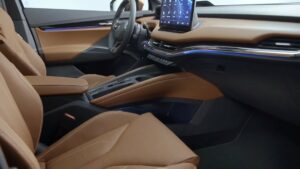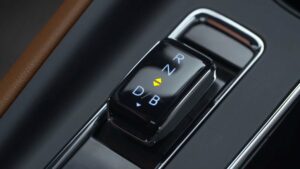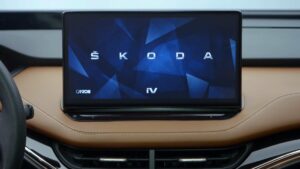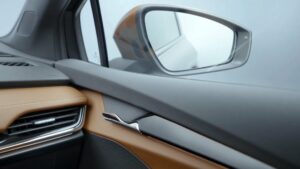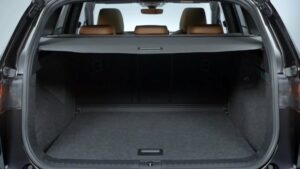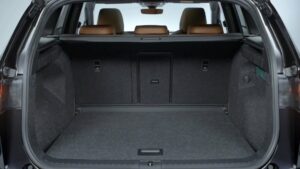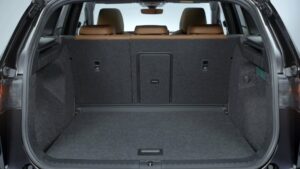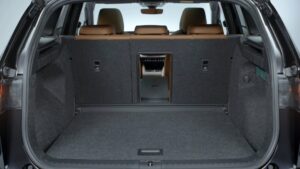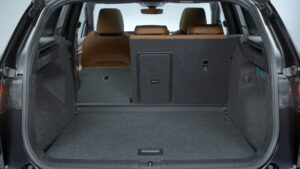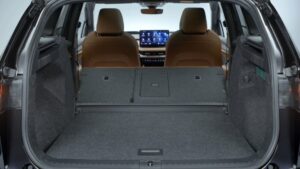Skoda Enyaq iV RS
Skoda Enyaq iV RS is an electric SUV that Skoda is expected to release in the near future. The Enyaq iV RS will be a sportier version of the regular Enyaq iV SUV, with improved performance and design.
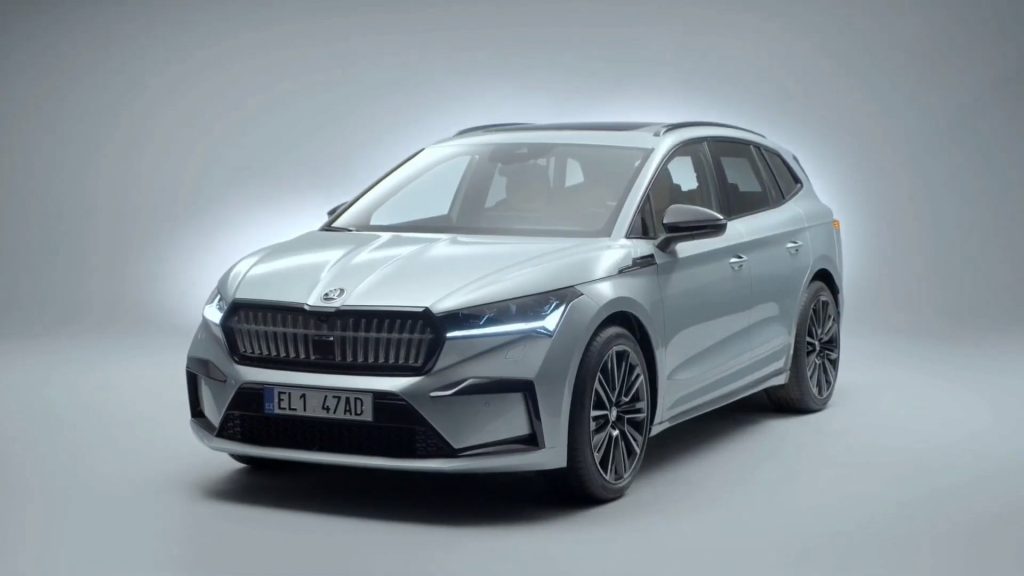
The Enyaq iV RS will reportedly be powered by an electric motor of around 225 kW and 460 Nm, which should give it impressive acceleration and a top speed of 0-100 km/h (0-62.1 mph) in 6.2 sec. The battery is also expected to be larger than that of the conventional Enyaq iV, which should result in an increased range of up to 396 km on a single charge.
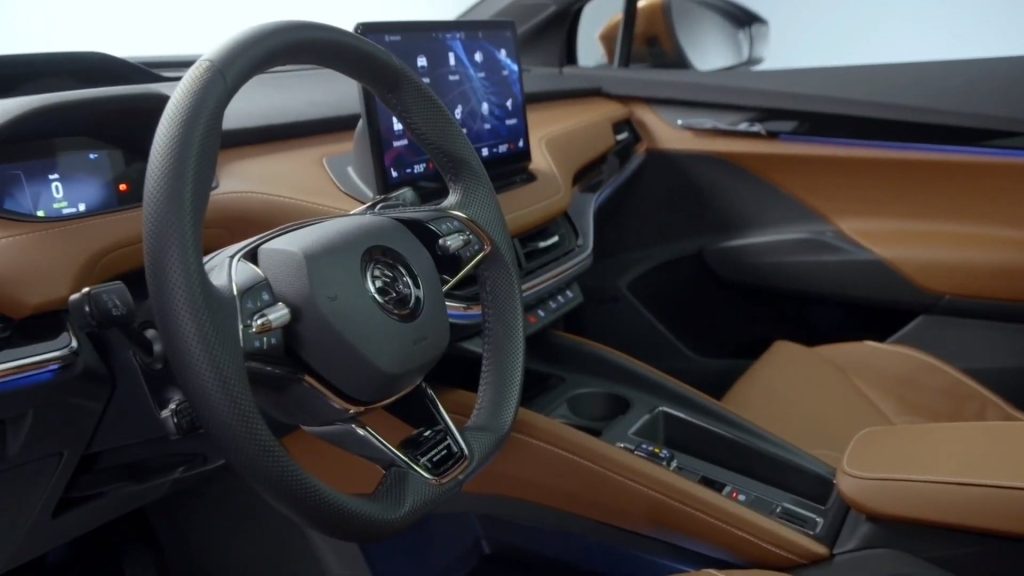
In terms of design, the Enyaq iV RS is likely to feature more sporty exterior design elements such as larger wheels and a more aggressive front grille. The interior is also expected to receive a number of upgrades, including more sporty seats and an updated dashboard.
Overall, the Skoda Enyaq iV RS could be an interesting addition to the growing market for electric SUVs, offering impressive performance and style in a practical and eco-friendly package.
| Performance | |
| Acceleration 0 – 100 km/h | 6.2 sec |
| Top Speed | 180 km/h |
| Electric Range | 395 km |
| Total Power | 225 kW (306 PS) |
| Total Torque | 460 Nm |
| Drive | AWD |
| Battery and Charging | |
| Battery Capacity | 82.0 kWh |
| Battery Useable | 77.0 kWh |
| Europe | |
| Charge Port | Type 2 |
| Port Location | Right Side – Rear |
| Charge Power | 11 kW AC |
| Charge Time (0->395 km) | 8h15m |
| Charge Speed | 48 km/h |
| Fastcharge Port | CCS |
| FC Port Location | Right Side – Rear |
| Fastcharge Power (max) | 135 kW DC |
| Fastcharge Time (40->316 km) | 33 min |
| Fastcharge Speed | 500 km/h |
| Energy Consumption | |
| EVDB Real Range | |
| Range | 395 km |
| Vehicle Consumption | 195 Wh/km |
| CO2 Emissions | 0 g/km |
| Vehicle Fuel Equivalent | 2.2 l/100km |
| WLTP Ratings | |
| Range | 460 km |
| Rated Consumption | No Data |
| Vehicle Consumption | 167 Wh/km |
| CO2 Emissions | 0 g/km |
| Rated Fuel Equivalent | No Data |
| Vehicle Fuel Equivalent | 1.9 l/100km |
|
Rated = official figures as published by manufacturer. Rated consumption and fuel equivalency figures include charging losses.
|
|
|
Vehicle = calculated battery energy consumption used by the vehicle for propulsion and on-board systems.
|
|
| Real Energy Consumption Estimation between 135 – 270 Wh/km | |
| City – Cold Weather * | 197 Wh/km |
| Highway – Cold Weather * | 270 Wh/km |
| Combined – Cold Weather * | 230 Wh/km |
| City – Mild Weather * | 135 Wh/km |
| Highway – Mild Weather * | 214 Wh/km |
| Combined – Mild Weather * | 171 Wh/km |
| Energy use for each trip will vary considerably depending on the driver and the conditions. Therefore, we have provided a range of estimates which can be useful in developing an understanding of the potential benefits of this technology. | |
| Safety (Euro NCAP) | |
| Adult Occupant | 94% |
| Child Occupant | 89% |
| Rating Year | 2021 |
| Vulnerable Road Users | 71% |
| Safety Assist | 82% |
| Dimensions and Weight | |
| Length | 4653 mm |
| Width | 1879 mm |
| Width with mirrors | 2148 mm |
| Height | 1604 mm |
| Wheelbase | 2768 mm |
| Weight Unladen (EU) | 2150 kg |
| Gross Vehicle Weight (GVWR) | No Data |
| Max. Payload | No Data |
| Cargo Volume | 585 L |
| Cargo Volume Max | 1710 L |
| Cargo Volume Frunk | 0 L |
| Roof Load | No Data |
| Tow Hitch Possible | Yes |
| Towing Weight Unbraked | No Data |
| Towing Weight Braked | 1200 kg |
| Vertical Load Max | No Data |
| Miscellaneous | |
| Seats | 5 people |
| Isofix | Yes |
| Turning Circle | No Data |
| Platform | VW MEB |
| Car Body | SUV |
| Segment | JC – Medium |
| Roof Rails | Yes |
| EV Dedicated Platform | Yes |
Home and Destination Charging (0 -> 100%)
A public charging station is required to use the highest possible charging rate. The EVSE/charging station’s charging capacity affects how long it takes to fully charge the battery. The table below shows all possible options for fully charging the Skoda Enyaq iV RS.
In Europe, plugging an electric car into an outlet is often as easy as plugging it into a household outlet, but there are differences from country to country. The table below shows the different ways to charge the Skoda Enyaq iV RS, but in some countries some chargers may not be available.
Type 2 ( IEC 62196)

| Charging Point | Max. Power | Power | Time | Rate |
| Wall Plug (2.3 kW) | 230V / 1x10A | 2.3 kW | 39h30m | 10 km/h |
| 1-phase 16A (3.7 kW) | 230V / 1x16A | 3.7 kW | 24h30m | 16 km/h |
| 1-phase 32A (7.4 kW) | 230V / 1x32A | 7.4 kW | 12h15m | 32 km/h |
| 3-phase 16A (11 kW) | 400V / 3x16A | 11 kW | 8h15m | 48 km/h |
| 3-phase 32A (22 kW) | 400V / 3x16A | 11 kW | 8h15m | 48 km/h |
Fast Charging (10 -> 80%)
If you want to enjoy driving an electric car, one of the most important features to consider is the number of miles per hour the car can travel while charged. This is called the “range” of the car. All electric cars have a certain range, even if they are 100% charged. This is because they do not have an internal combustion engine to lean on if you need to drive a long distance.
Max. Power: The maximum power provided by the charging point
Avg. Power: The average power provided by the charging point during a session of 10% to 80%.
Time: the time it takes to charge from 10% to 80%
Speed: the average charging rate during the session of 10% to 80%
Combined Charging System (CCS Combo 2)
| Charging Point | Max. Power | Avg. Power | Time | Rate |
| CCS (50 kW DC) | 49 kW | 48 kW | 71 min | 230 km/h |
| CCS (175 kW DC) | 135 kW | 103 kW | 33 min | 500 km/h |
| CCS (350 kW DC) | 135 kW | 103 kW | 33 min | 500 km/h |
| Brand | Skoda |
| Model | Enyaq iV RS |
| Body Style | SUV |
| Car Engine | electric |
| Motor power | 225 |
| Maximum Torque, Nm | 460 |
| Battery Energy, kWh | 82.0 |
| Power reserve (NEDC/EPA/WLTP), km | - / - / 395 |
| Level Charging (230/400/DC), hours | - / 8.15 / 0.33 |
| Electrical Acceleration, 0-100 km/h (0-62.1 mph) in sec | 6.2 |
| Top Speed, km/h | 180 |

